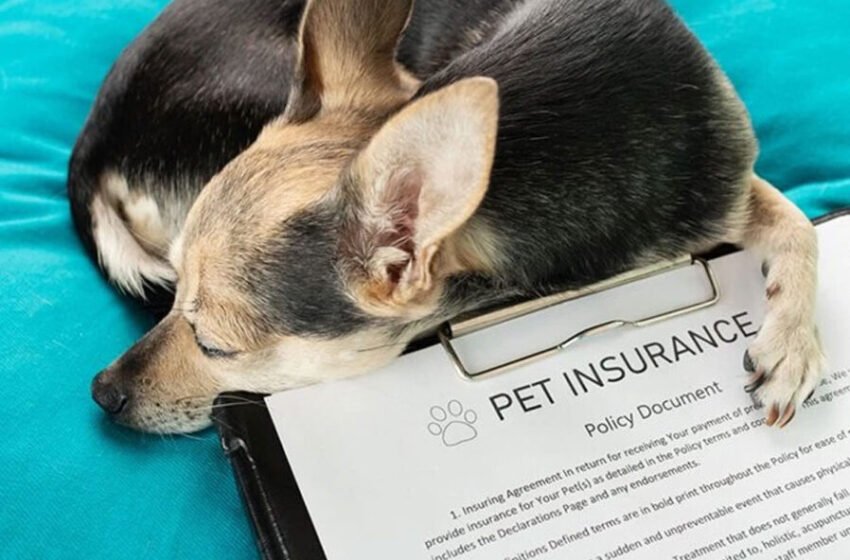Safeguarding Your Pet Sitting Service with the Right Insurance

Table of Contents
- Introduction
- Understanding the Importance of Insurance
- Types of Insurance for Pet Sitters
– 3.1 General Liability Insurance
– 3.2 Professional Liability Insurance
– 3.3 Commercial Property Insurance
– 3.4 Workers’ Compensation Insurance
- Assessing Your Risk Exposure
- Choosing the Right Insurance Provider
- Key Considerations When Purchasing Insurance
- Navigating Claims and Policy Terms
- Real-Life Examples of Insurance Challenges
- Maintaining Your Coverage as Your Business Grows
- Conclusion: Building a Resilient Business
Introduction
Entering the pet-sitting industry can be a fulfilling endeavor, allowing you to combine your passion for animals with a profitable business model. However, just like any other service-based business, it comes with inherent risks and liabilities that can threaten your livelihood if not properly managed. One of the most effective ways to mitigate these risks is through comprehensive insurance coverage tailored specifically for pet sitters.
In this guide, we will explore the nuances of pet sitting insurance, detailing why it is essential, the types available, and how to select the right policy to safeguard your service effectively.
Understanding the Importance of Insurance
Insurance serves as a safety net for your pet-sitting business, protecting you from potential financial losses stemming from accidents, injuries, or unforeseen events. Here are several reasons why securing the right insurance is crucial:
– Financial Protection: In the event of a lawsuit or claim, insurance can cover legal fees and damages.
– Credibility: Having insurance can enhance your reputation, building trust with clients who want assurance that their pets are in safe hands.
– Compliance: Some states or municipalities may require certain types of insurance for pet-service businesses.
– Peace of Mind: With proper coverage, you can focus on providing excellent service rather than worrying about potential risks.
Types of Insurance for Pet Sitters
Selecting appropriate insurance involves understanding the different types available and what they cover. Below are several key policies every pet sitter should consider.
General Liability Insurance
General liability insurance is foundational for any service-oriented business. This policy covers claims related to bodily injury or property damage that may occur during your pet-sitting activities.
For example, if a client’s dog accidentally injures someone while in your care, general liability insurance would cover medical expenses and legal fees associated with the incident.
Professional Liability Insurance
Also known as errors and omissions insurance, this policy protects you against claims arising from negligence or mistakes in your professional services. If a pet falls ill or suffers an injury while under your supervision, clients may seek compensation for their veterinary bills or emotional distress.
Commercial Property Insurance
If you operate your pet-sitting service from a physical location, commercial property insurance is essential. This policy covers damage to your property or business equipment due to fire, theft, vandalism, or natural disasters.
Workers’ Compensation Insurance
If you employ others in your pet-sitting service, workers’ compensation insurance is often mandatory. It provides coverage for medical expenses and lost wages if an employee is injured while working.
Assessing Your Risk Exposure
Before purchasing insurance, it is vital to assess the unique risks associated with your specific pet-sitting operations. Consider factors such as:
– The types of animals you will care for (e.g., dogs vs. exotic pets).
– The number of pets you handle at one time.
– Whether you conduct services in clients’ homes or have a dedicated facility.
– The scope of services offered (e.g., walking, grooming).
Conducting a thorough risk assessment will help you determine which types and levels of coverage are necessary for your business.
Choosing the Right Insurance Provider
Not all insurance providers are created equal; selecting one that understands the unique needs of pet sitters is crucial. Here are some tips to help you choose effectively:
– Specialization: Look for insurers who specialize in pet-related businesses.
– Reputation: Read reviews and seek recommendations from other pet sitters.
– Coverage Options: Ensure they offer comprehensive policies tailored to various risks.
– Customer Service: Choose a provider with accessible customer support for questions and claims assistance.
Key Considerations When Purchasing Insurance
When you’re ready to purchase a policy, keep these considerations in mind:
- Policy Limits: Understand the maximum amount your insurer will pay out per claim and in total annually.
- Deductibles: Know how much you’ll need to pay out-of-pocket before coverage kicks in.
- Exclusions: Carefully read what is not covered under the policy.
- Endorsements: Consider additional endorsements that may enhance your coverage based on specific needs.
Navigating Claims and Policy Terms
Understanding how to navigate claims processes can be daunting but is essential when safeguarding your business effectively. Here’s how to simplify it:
– Documentation: Keep detailed records of all incidents involving pets in your care; photographs can also be helpful.
– Timeliness: Report incidents immediately—delays can complicate claims processing.
– Clear Communication: Provide clear and concise information when filing a claim to avoid misunderstandings.
It is also beneficial to familiarize yourself with terms like “adjuster,” “coverage period,” and “subrogation” that may arise during this process.
Real-Life Examples of Insurance Challenges
Learning from real-world scenarios can provide invaluable insights into potential pitfalls:
Case Study 1: The Injured Dog Incident
A pet sitter took a dog out for a walk when it was spooked by another animal and bit a passerby. The resulting lawsuit claimed significant medical bills and pain and suffering damages against the sitter. Fortunately, their general liability insurance covered legal fees and settlement costs due to adequate policy limits.
Case Study 2: Property Damage Claim
A cat knocked over an expensive vase while in the care of a pet sitter during a house visit. The vase belonged to an irate client who demanded compensation for damages. The sitter’s general liability policy facilitated smooth resolution without damaging their business relationship with the client.
These examples underscore why having robust insurance coverage is critical in navigating unexpected challenges effectively.
Maintaining Your Coverage as Your Business Grows
As your pet-sitting business expands or diversifies its services, regularly reviewing and updating your insurance policy becomes necessary:
– Scalability: If you hire more staff or take on additional responsibilities (like grooming), assess whether current coverage remains adequate.
– Changing Regulations: Stay informed about any changes in local laws regarding required insurances.
– Client Expectations: As clients demand more comprehensive services or higher assurances, adjust policies accordingly.
By proactively managing your insurance portfolio, you ensure continued protection as your business landscape evolves.
Engaging in thorough research regarding Pet Business Insurance allows you to make informed decisions that directly impact both your peace of mind and financial stability as you navigate this fulfilling yet challenging industry landscape.





